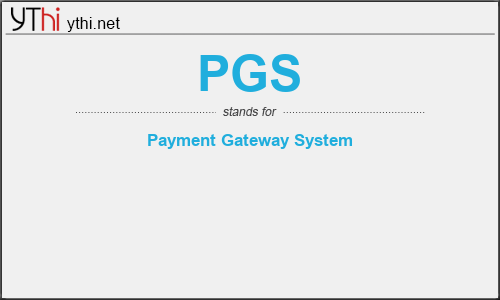What does PGS mean? What is the full form of PGS?
The full form of PGS is Payment Gateway System.
A payment gateway is what keeps the payments ecosystem rolling smoothly, as it enables online payments for consumers and businesses. If you’re an online merchant, you don’t need to be a payment gateway expert, but it’s worth understanding the basics of how an online payment flows from your customer to your bank account.
This article explains what is a payment gateway, how it works, why an online merchant needs one and how to choose which payment gateway service is right for your business
The key players in online payments
Before we delve deeper into the definition of a payment gateway, we need to identify the key players in online payments. When a customer clicks on the “Pay” button on your website, these are the key players involved in the payment process:
- The merchant: this is you, i.e an online business operating in any vertical (travel, retail, eCommerce, gaming, Forex, etc), offering a product or service to customers
- The customer: the customer, also called a cardholder, who wants to access the products or services that the merchant is selling, and initiates the transaction
- The issuing bank: the issuing bank is the customer’s bank that issues the cardholder’s credit or debit card on behalf of the card schemes (Visa, Mastercard)
- The acquirer: also known as the acquiring bank, the acquirer is the financial institution that maintains the merchant’s bank account (known as the merchant’s account). The acquiring bank passes the merchant’s transactions to the issuing bank to receive payment
What is a payment gateway / processor?
The definition of a payment gateway is the technology that captures and transfers payment data from the customer to the acquirer and then transfers the payment acceptance or decline back to the customer. A payment gateway validates the customer’s card details securely, ensures the funds are available and eventually enables merchants to get paid. It acts as an interface between a merchant’s website and its acquirer. It encrypts sensitive credit card details, ensuring that information is passed securely from the customer to the acquiring bank, via the merchant.
In other words, the payment gateway works as the middleman between your customer and the merchant, ensuring the transaction is carried out securely and promptly. An online payment gateway can simplify how merchants integrate the necessary software. As the middleman during the payment processing, the gateway manages the customer’s sensitive card details between the acquirer and the merchant.
PGS
means
Payment Gateway System![]()
Translate Payment Gateway System to other language.


Leave a Reply
You must be logged in to post a comment.